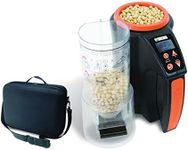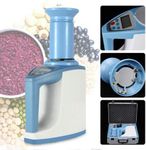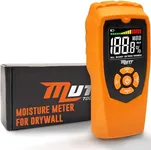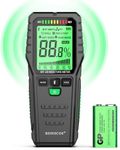Buying Guide for the Best Grain Moisture Meters
Choosing the right grain moisture meter is crucial for farmers, grain handlers, and anyone involved in the storage and processing of grains. A grain moisture meter helps determine the moisture content in grains, which is essential for preventing spoilage, ensuring quality, and optimizing storage conditions. When selecting a grain moisture meter, it's important to consider several key specifications to ensure you get a device that meets your needs and provides accurate, reliable readings.AccuracyAccuracy refers to how close the moisture meter's readings are to the actual moisture content of the grain. This spec is important because accurate readings help you make informed decisions about drying, storing, and processing your grains. Accuracy is usually expressed as a percentage, with lower percentages indicating higher accuracy. For most users, an accuracy within ±0.5% to ±1% is sufficient. If you need highly precise measurements, look for meters with higher accuracy ratings.
Measurement RangeThe measurement range indicates the range of moisture content levels that the meter can measure. This is important because different grains have different moisture content levels, and you need a meter that can handle the specific range of the grains you are working with. Measurement ranges typically vary from 5% to 40% moisture content. If you work with a variety of grains, choose a meter with a broader range to accommodate different types.
CalibrationCalibration refers to the process of setting the meter to provide accurate readings for different types of grains. This is important because different grains have different properties that can affect moisture readings. Some meters come pre-calibrated for specific grains, while others allow you to manually calibrate for different types. If you work with multiple grain types, a meter with easy calibration options will be more versatile and useful.
PortabilityPortability refers to how easy it is to carry and use the moisture meter in different locations. This is important for users who need to take measurements in the field, at different storage sites, or in various processing facilities. Portable meters are typically lightweight, battery-operated, and easy to handle. If you need to move around frequently, look for a compact and portable model.
Display and InterfaceThe display and interface of the moisture meter determine how easy it is to read and interpret the measurements. This is important because clear and easy-to-read displays help you quickly understand the moisture content and make decisions. Look for meters with large, backlit displays and intuitive interfaces. Some advanced models also offer digital readouts and additional features like data logging and connectivity to other devices.
DurabilityDurability refers to the meter's ability to withstand tough conditions and regular use. This is important for users who work in harsh environments or need a device that can handle frequent use. Durable meters are typically made from robust materials and may have features like water resistance and shockproof designs. If you work in challenging conditions, choose a meter that is built to last.






















